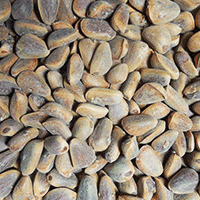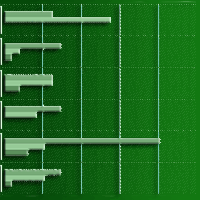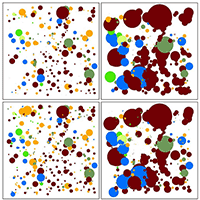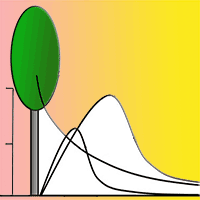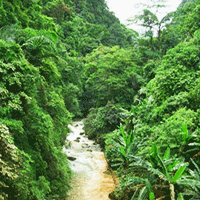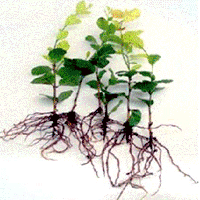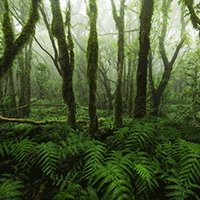
Regeneration dynamics in the laurel forest: changes in species richness and composition
José Ramón Arévalo (1) , Lea De Nascimento (1), Silvia Fernández-Lugo (1), Javier Méndez (1), Guacimara González-Delgado (1), Eduardo Balguerías (1), Eduardo Gomes Pereira Cabral (2), José María Fernández-Palacios (1)
iForest - Biogeosciences and Forestry, Volume 11, Issue 2, Pages 308-314 (2018)
doi: https://doi.org/10.3832/ifor2580-011
Published: Apr 13, 2018 - Copyright © 2018 SISEF
Research Articles
Collection/Special Issue: COST Action FP1202
Strengthening conservation: a key issue for adaptation of marginal/peripheral populations of forest trees to climate change in Europe (MaP-FGR)
Guest Editors: Fulvio Ducci, Kevin Donnelly
Abstract
The recovery and survival of the Macaronesian laurel forest depends on its regeneration strategies. After years of long-term monitoring, both sexual and asexual regeneration appear to be equally important. However, the mechanisms for each are just beginning to be understood. In order to contribute to the understanding of the laurel forest sexual regeneration, we analyzed the species composition of the seedling bank every two weeks over three years in the laurel forest of Anaga (Tenerife, Canary Islands). We compared the species compositions of the seedling bank with the canopy, and analyzed changes in their diversity over this period in different forest stands. We found that species diversity (evenness) is different among plots regardless of the stand. In some cases, plot diversity remained constant over time, while others showed some variations, which were little related to climatic conditions (temperature and precipitation). We also found no relationship between the seedling bank and canopy composition, with shade-intolerant species being more abundant in the former. Although climatic conditions remained constant during the period and other environmental conditions did not vary either, some changes were found in the seedling bank species composition. These were related to the increased degree of conservation of the laurel forest of Anaga (by closing unpaved roads, limiting access, and the abandonment of agriculture) that had negatively affected the density of shade-intolerant species. We suggest that such conservation measures should be maintained and extended to other areas where agriculture has been recently abandoned to allow the potential establishment of laurel forest and late successional species.
Keywords
Conservation, Evenness, Regeneration, Seedling Bank, Species Composition
Authors’ Info
Authors’ address
Lea De Nascimento
Silvia Fernández-Lugo
Javier Méndez
Guacimara González-Delgado
Eduardo Balguerías
José María Fernández-Palacios
Departamento de Botánica, Ecología y Fisiología Vegetal, Universidad de La Laguna, La Laguna, 38206 Santa Cruz de Tenerife (Spain)
Instituto de Botânica, Governo do Estado São Paulo, Av. Miguel Stéfano 3687, São Paulo (Brazil)
Corresponding author
Paper Info
Citation
Arévalo JR, De Nascimento L, Fernández-Lugo S, Méndez J, González-Delgado G, Balguerías E, Gomes Pereira Cabral E, Fernández-Palacios JM (2018). Regeneration dynamics in the laurel forest: changes in species richness and composition. iForest 11: 308-314. - doi: 10.3832/ifor2580-011
Academic Editor
Fulvio Ducci
Paper history
Received: Aug 03, 2017
Accepted: Jan 12, 2018
First online: Apr 13, 2018
Publication Date: Apr 30, 2018
Publication Time: 3.03 months
Copyright Information
© SISEF - The Italian Society of Silviculture and Forest Ecology 2018
Open Access
This article is distributed under the terms of the Creative Commons Attribution-Non Commercial 4.0 International (https://creativecommons.org/licenses/by-nc/4.0/), which permits unrestricted use, distribution, and reproduction in any medium, provided you give appropriate credit to the original author(s) and the source, provide a link to the Creative Commons license, and indicate if changes were made.
Web Metrics
Breakdown by View Type
Article Usage
Total Article Views: 48358
(from publication date up to now)
Breakdown by View Type
HTML Page Views: 40894
Abstract Page Views: 2632
PDF Downloads: 3763
Citation/Reference Downloads: 19
XML Downloads: 1050
Web Metrics
Days since publication: 2802
Overall contacts: 48358
Avg. contacts per week: 120.81
Citation Metrics
Article Citations
Article citations are based on data periodically collected from the Clarivate Web of Science web site
(last update: Mar 2025)
Total number of cites (since 2018): 2
Average cites per year: 0.25
Publication Metrics
by Dimensions ©
Articles citing this article
List of the papers citing this article based on CrossRef Cited-by.
References
Pteridophyta, Spermatophyta. In: “Lista de especies silvestres de Canarias (hongos, plantas y animales terrestres” [Check list of wild species of the Canary Islands: fungus, plants and terrestrial animals] (Arechavaleta M, Rodríguez S, Zurita N, García A eds). Gobierno de Canarias, S/C de Tenerife, Spain, pp. 119-172. [in Spanish]
Gscholar
Distribución espacial y temporal de la laurisilva de Anaga, Tenerife. Islas Canarias [Spatial and temporal distribution of the laurel forest of Anaga, Tenerife. Canary Islands]. PhD Thesis, Universidad de La Laguna, La Laguna, Spain, pp. 110. [in Spanish]
Gscholar
Mapa de Vegetación de Canarias [Vegetation Map of the Canary Islands]. GRAFCAN, Santa Cruz de Tenerife, Spain, pp. 552. [in Spanish]
Gscholar
Qué son los bosques antiguos de laurisilva. Su valor y situación en Canarias [What are the old laurel forest. Value and status in the Canary Islands]. In: “La Gomera entre bosques y taparuchas” [La Gomera between forests and “taparuchas”] (Afonso J ed). Instituto de Estudios Hispánicos de Canarias, Puerto de La Cruz, pp. 1-60. [in Spanish]
Gscholar
Los suelos volcánicos de Canarias [Volcanic soils of the Canary Islands]. Servicio de Publicaciones Universidad de La Laguna, Santa Cruz de Tenerife, Spain, pp. 248. [in Spanish]
Gscholar
(9360) Laurisilvas macaronésicas (Laurus, Ocotea) [Macaronesian laurel forests]. In: “Bases ecológicas preliminares para la conservación de los tipos de hábitat de interés comunitario en España” [Ecological premises for conservation of habitats of interest in the European Community]. Ministerio de Medio Ambiente y Medio Rural y Marino, Madrid, Spain, pp. 68. [in Spanish]
Gscholar
Klima und vegetation auf Teneriffa, besonders im Hinblick auf den Nebelniederschalg [Climate and vegetation of Tenerife, with special regard to the fog effect]. Scripta Geobotanica 78, Göttingen, Germany, pp. 19. [in German]
Gscholar
Seed and seedling ecology. In: “Functional Plant Ecology” (Pugnaire, JI, Valladares F eds). CRC Press, Boca Ratón, FL, USA, pp. 549-579.
Gscholar
Gran atlas temático de Canarias [Great thematic atlas of the Canary Islands]. Editorial Interinsular Canaria, Santa Cruz de Tenerife, Spain, pp. 376. [in Spanish]
Gscholar
Structure and differentiation of cloud forest along topographical gradients in Anaga mountains, Tenerife, The Canary Islands. In: “A comparative study on evergreen broad-leaved forest and trees of the Canary Islands and Japan” (Ohsawa M, Wildprett W, Del Arco M eds). Chiba University, Chiba, Japan, pp. 67-118.
Gscholar
Bosques de laurisilva en la región macaronésica [Laurel forests of the Macaronesian Region]. Colección Naturaleza y Medio ambiente 49, Council of Europe, Strasbourg, France, pp. 77. [in Spanish]
Gscholar
The practice of silviculture (9th edn). Applied Forest Ecology, John Wiley and Sons Inc., New York, USA, pp. 537.
Gscholar
CANOCO. Reference manual and user’s guide to Canoco for Windows: software for canonical community ordination (4th version). Microcomputer Power, Ithaca, NY, USA, pp. 500.
Gscholar
The functional ecology of the seed banks. In: “The ecology of regeneration in plant communities” (Fenner M ed). CAB International, Wallingford Oxon, UK, pp. 231-257.
Gscholar
Estudio sobre la comunidad de aves de la laurisilva de la isla de Tenerife (Islas Canarias) [Study of the laurel forest bird community at the island of Tenerife (Canary Islands)]. Seo-Birdlife, Viceconsejería de Política Territorial del Gobierno de Canarias, Santa Cruz de Tenerife, Spain, pp. 167. [in Spanish]
Gscholar
Biostatistical analysis (2nd edn). Prentice-Hall, Englewood Cliffs, NJ, USA, pp. 718.
Gscholar

